I don’t know about you, but I’ve been wondering about quince all winter. I’ve noticed it more and more, popping up in food blogs, restaurant menus, and farmer’s market jelly and other goodies. To me, it looks like a cross between a pear and a lemon (and is in fact related to pears and apples) but it is hard and yellow when ripe and inedible when raw. However, when cooked, quince becomes sweet due to the tannins in the fruit that cut its tartness, which also turn it pink, with a lovely floral aroma and flavor.
I discovered the fruit in the produce section of my local food co-op for $3.49/lb.
I thought about making a paste (apparently this is a popular snack in Spain when paired with Manchego, sheep’s milk cheese) or jelly, as quince is full of natural pectin, a gelling agent. Instead, I decided to venture outside the box in an effort to make an original recipe – something I don’t normally do but is my goal for Kitchen Adventures. I saw many quince recipes pairing them with their apple and pear cousins, but instead I thought I would couple them with a similar fruit, one that is also bitter and inedible when raw: cranberries.
Quince and Cranberry Strudel
Ingredients:
- 2/3 cup agave nectar (you can substitute ~1 cup of sugar if you don’t have agave)
- 1 cup of water
- 1 stick of cinnamon
- 1/2 vanilla bean pod, split and scraped
- 3 quince (about 1 pound)
- 1 lb. cranberries (fresh or frozen)
- 1/2 cup of walnuts
- Phyllo dough, thawed
- 1 stick of butter, melted
Combine agave nectar, water, cinnamon stick and vanilla beans in medium saucepan over medium-high heat. Bring to a boil while you quarter, core and peel the quince.
(Sidenote: the quince are really, really hard. I was using a brand-new Global knife (i.e. a very sharp knife) and I had a difficult time slicing into the fruit. Coring was difficult as well, and I ended up slicing bits of hard core off after cooking the quince. It was much easier to identify and cut off the core once the fruit was cooked and soft, so don’t worry about missing parts of the core when they are raw.)
Once the mixture comes to a boil, reduce heat and add quince pieces. Cover and simmer for 1-2 hours, until fruit turns pink and is soft (you can easily prick it with a fork). Strain fruit through a colander, saving the cooking liquids in a bowl. Pour liquids back into the saucepan and add cranberries over high heat, bringing it to a boil. Boil for around 10 minutes, or until berries burst. If needed, add more agave nectar to taste. While the cranberries cook, slice the quince into thin pieces.
(At this point, I placed the quince and quince-cranberry sauce separately into the fridge overnight to let the flavors develop. If you’re short on time, skip this step.)
Preheat oven to 350˚. Place walnuts on cookie sheet and toast for 5-8 minutes, until fragrant (check them often so they don’t burn!). Let walnuts cool, then place in food processor and pulse several times until they are coarsely ground.
Place phyllo dough on a cookie sheet, covering the surface. Brush melted butter on top and place another sheet of dough on top, repeating for around 8 layers. Put quince slices evenly on dough, leaving around 1 inch border on bottom, left and right sides, and a 2 inches on top. Sprinkle
walnuts on top of quince, and then spoon a thin layer of cranberry sauce evenly on top of the quince. Fold bottom layer up to fruit, brushing melted butter on top. Fold left and right sides in, also brushing butter on top.
Roll dough away from you, until the pastry is one big roll. Brush melted butter on seam
and roll over so it is on the bottom. Don’t worry if it cracks – actually, if it doesn’t, score it with a knife a few times across the top.
Bake it on the middle rack for around 30-45 minutes, or until golden brown. Serve à la mode if you have any ice cream in the fridge, with some of the leftover quince-cranberry sauce, or, as pictured below, with whipped cream.
(Note: I ended up with a good amount of leftover quince-cranberry sauce. It was delicious on its own, but if you don’t want leftovers to snack on, cut the cranberries in half.)
If you want to try something different with this lovely fruit, there are many more quince recipes on Simply Recipes, Epicurious, and Cooking Light.
More recipes you’ll love:
5 Comments on Week 1: How do You Eat Quince?
1Pingbacks & Trackbacks on Week 1: How do You Eat Quince?
-
[…] that possible?! It feels like only yesterday I picked up some quince, took some crappy pictures and posted about it). I started 52 Kitchen Adventures at the beginning of the year as sort of a New Year’s […]

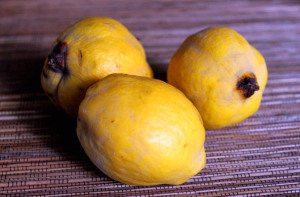






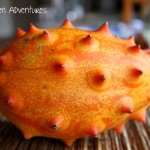
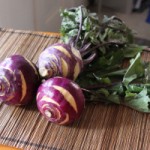
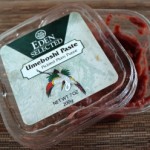
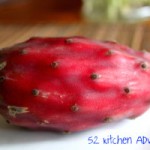
Jess
January 4, 2010 at 9:31 am (15 years ago)Tastes as good as it looks!
Stephanie
January 5, 2010 at 2:58 pm (15 years ago)Thanks Jess! Glad you liked it
Laura
January 7, 2010 at 10:22 am (15 years ago)how fun! you are so creative 🙂 the only thing I’ve ever used Phyllo dough for is paklava. looking forward to reading your upcoming posts!
Stephanie
January 7, 2010 at 3:21 pm (15 years ago)Thanks Laura!